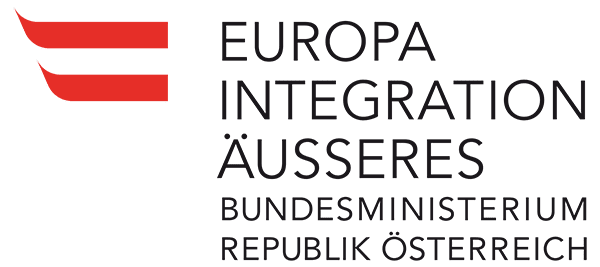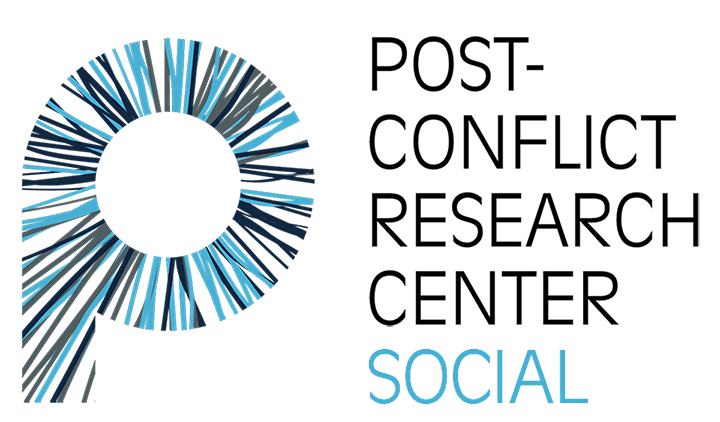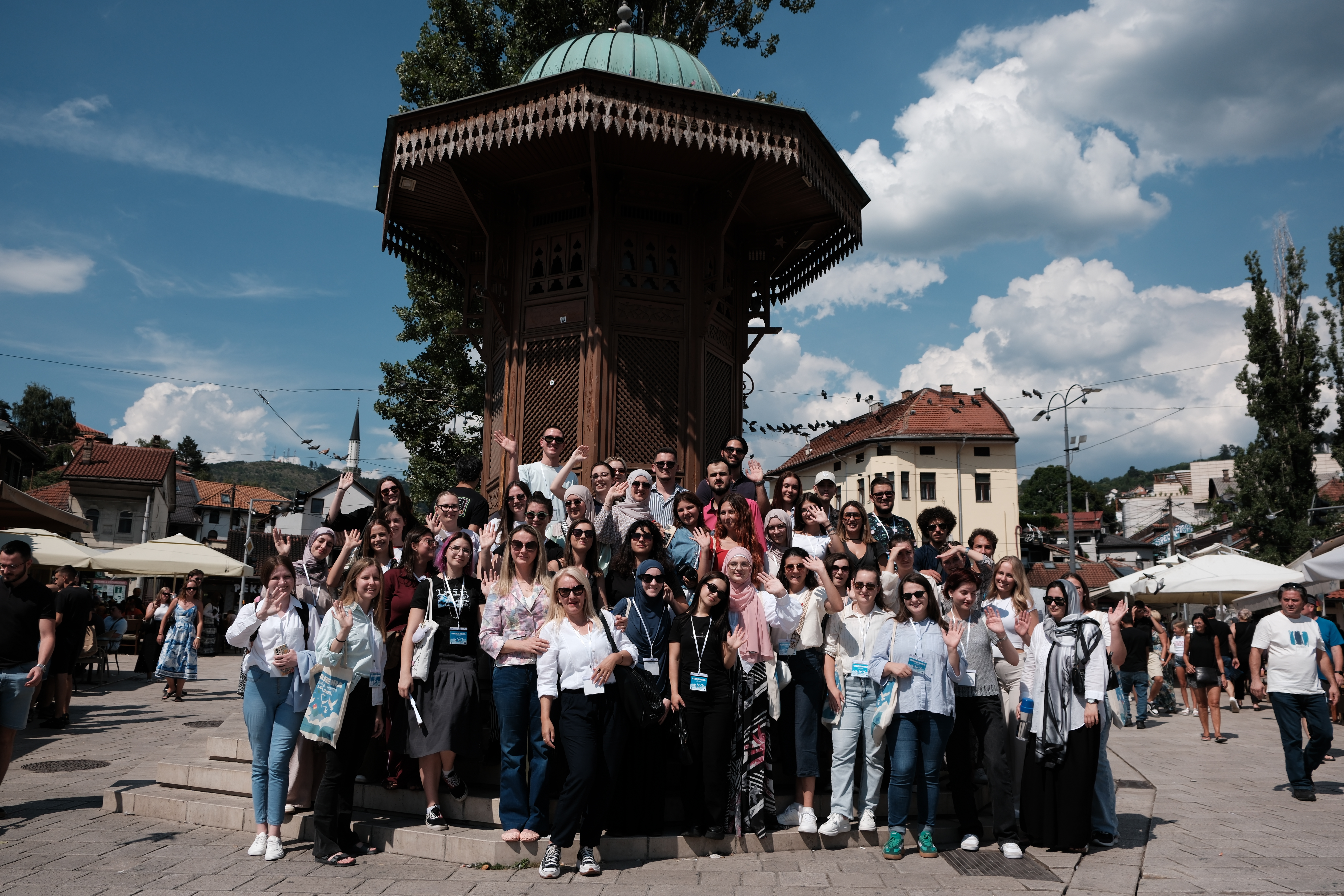
Religious leaders from four different religions—located within just 400 meters of one another in Sarajevo, often called the “European Jerusalem”—delivered a unified message to participants of the youth academy “State of Peace” – that peace can only be built together.
The “State of Peace” Youth Academy, organized by the European Union in Bosnia and Herzegovina in cooperation with the Post-Conflict Research Center (PCRC), brought together 50 young people from Bosnia and Herzegovina, Serbia, Montenegro, and Croatia. The aim is to foster connection, learning, and contribution to peacebuilding. The academy takes place across seven cities in Bosnia and Herzegovina: Sarajevo, East Sarajevo, Tuzla, Brčko, Ugljevik, Vitez, and Travnik.
“If we are good people, good brothers and sisters, then the future holds no crisis for us. Simply, let’s be human,” said Protopresbyter Nemanja Đureinović, head priest of the Orthodox Church of the Nativity of the Theotokos.
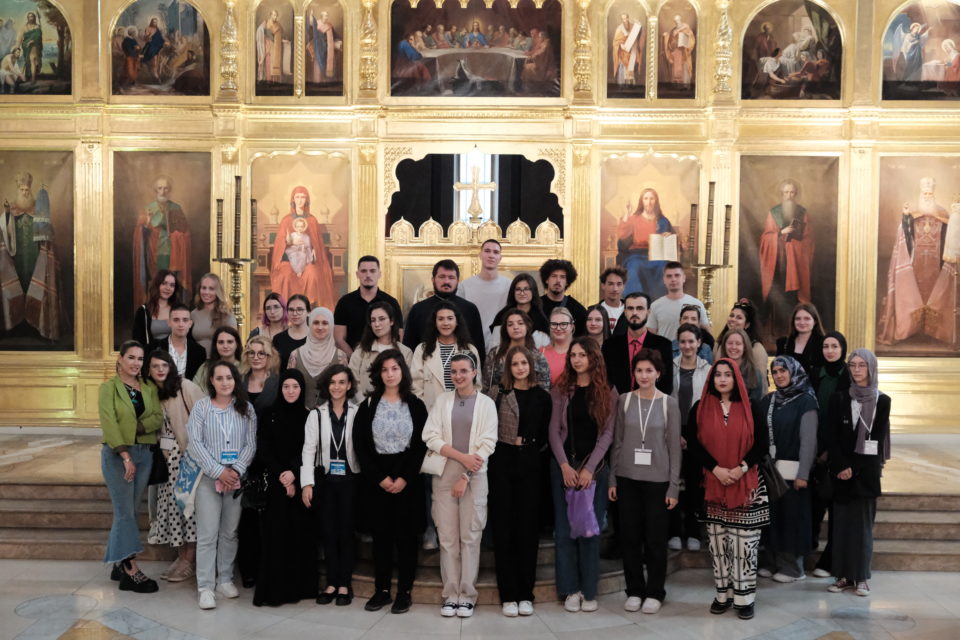
Father Đureinović explained that the church was built in 1863 at the request of Sarajevo’s Orthodox Serbs. Sultan Abdulaziz issued a decree allowing for the construction of the new Orthodox church on the right bank of the Miljacka River and contributed 500 gold ducats to help fund it. The church took nine years to build and today covers an area of 650 square meters.
In response to a question from academy participant Dženana Beširović from Živinice (Bosnia and Herzegovina) about how to build trust among people, Đureinović said: “If we approach others with a pure heart and play with open cards, so to speak, that’s the only way to earn the trust of the person across from you, regardless of their skin color, religion, or anything else.”
Just a short walk from the Church stands the Sacred Heart Cathedral. Vlado Vrebac, who is temporarily replacing the lead parish priest, explained that the Cathedral serves as the seat of the Archdiocese of Vrhbosna, which administers the archdiocese on behalf of the Holy Father, the Pope in Rome. It is also a parish church, serving the community and hosting religious services and worship.
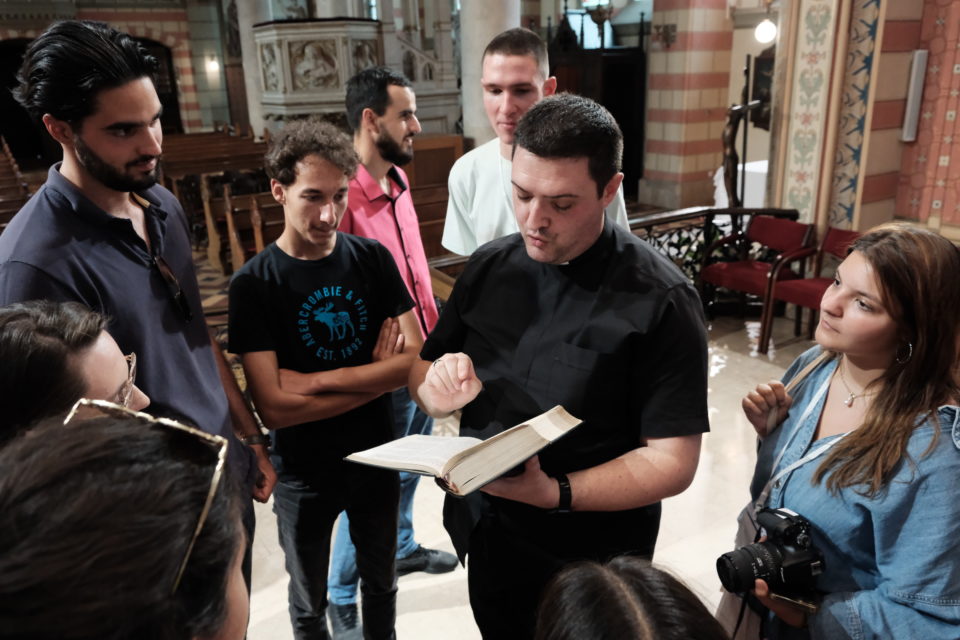
Vrebac showed academy participants the Peace Lantern, brought to the Cathedral by Pope John Paul II during his visit to Bosnia and Herzegovina in 1997. The lantern is meant to remain forever lit in the Cathedral as a reminder “to all Catholics, and everyone who enters the Cathedral, that we must be a beacon of peace and shine light for peace in this world.”
“The Cathedral is a gathering place for Sarajevans of all faiths, all ethnicities, and all good-hearted people,” said Vrebac.
Heading from the Cathedral toward Baščaršija, participants visited the Gazi Husrev-beg Mosque. Imam Edin Hamzakadić explained that it is the most well-known mosque in Bosnia and Herzegovina and one of the most famous in the Balkans. He spoke to the participants about the five daily prayers held at the mosque, the structure of the Islamic community, and Sarajevo’s spirit of religious coexistence.
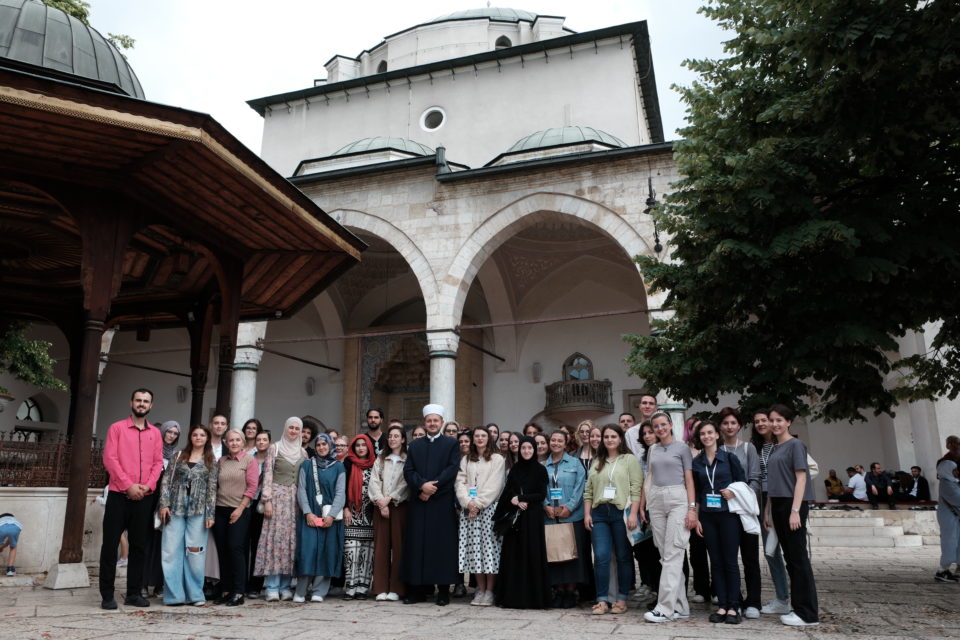
“Sarajevo is a place of openness and inclusivity, welcoming to all,” said Hamzakadić.
He emphasized that the Islamic Community, Catholic Church, Orthodox Church, and Jewish Community must work together in advocating for peace. “At all costs, peace is our priority,” said Imam Hamzakadić.
The fourth house of worship visited by the academy participants was the Ashkenazi Synagogue. Vladimir Andrle, president of the Jewish Cultural-Educational Society “La Benevolencija,” spoke about the Judaism, the suffering of Jews in Bosnia and Herzegovina during World War II, the help Jews provided to citizens during the siege of Sarajevo, and the cooperation among religious institutions.
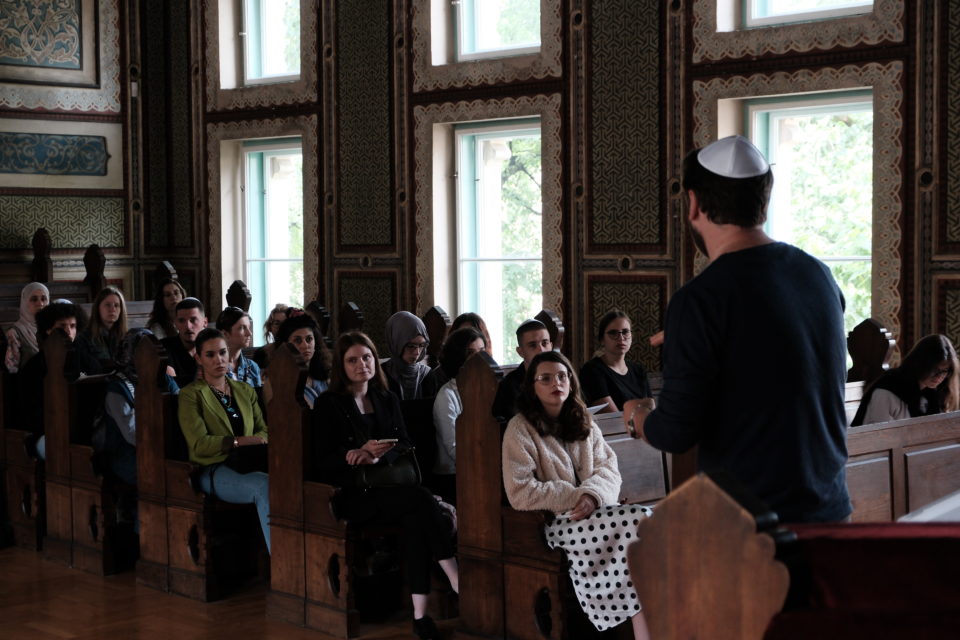
He highlighted cooperation with the Srebrenica Memorial Center, a joint conference on combating genocide denial, and mentioned that he was personally a member of the Memorial Center’s Religious Dialogue Committee.
His message to the participants was that “the fact that you are together, getting to know each other, socializing, exchanging opinions, and visiting religious sites will, in the long term, help build peace. People must cooperate and support one another,” said Andrle.
Lav Savić, a participant from Bar (Montenegro), found it fascinating that all the religious leaders referred to Sarajevo as the European Jerusalem, and said he was glad to learn about religious differences he hadn’t previously encountered. “Religious institutions are working on promoting cohesion, and we should never judge people by their faith, as we are all human beings.” said Savić.
Stefan Lepojević, a participant from Vršac (Serbia), said visiting the religious sites helped expand his understanding of various religions. He emphasized that listening to others’ stories and experiences helps us better understand life. “I believe faith brings us together,” said Lepojević.
Lamija Bašović from Sarajevo (Bosnia and Herzegovina) believes that religious institutions can bring people closer together and subtly teach us about the differences we all carry within ourselves.



